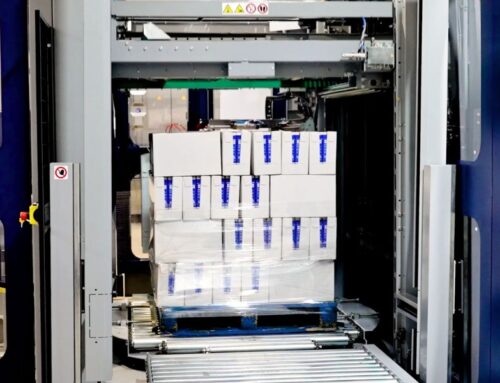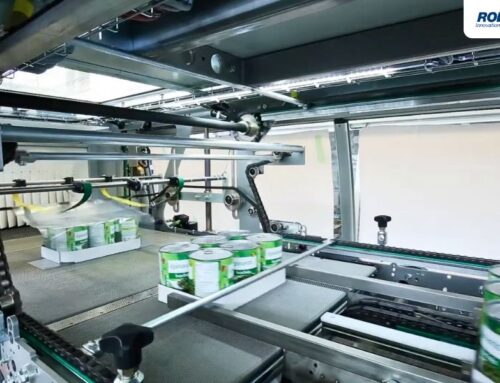In the beverage packaging industry, stretch-wrapping machines are crucial for securing bottles for transport. No matter how reliable these machines are, they’re not infallible. We’ll explain how to troubleshoot common issues in bottle stretch wrapping machines, like the film breaking during wrapping and bottle shifting.
Film Breaks During Wrapping
Snapping during the cycle or inconsistencies in wrap coverage can activate tension alarms that force the machine to halt operations. Several culprits can trigger this problem, such as incorrect film threading, high film tension settings, low-quality/damaged film, and dirty/worn pre-stretch rollers.
To fix the problem, verify the correct threading of the film, referring to the threading diagram in the machine’s user manual. Next, reduce the tension through the human-machine interface (HMI) controls. Replace the film with a high-grade alternative if it appears subpar. Lastly, clean or replace rollers for smooth film handling.
Bottles Shifting or Falling During the Cycle
Leaning or toppling bottles during wrapping indicates instability and may lead to loose or uneven wrap layers. Typically, instability issues stem from a mismatch between the speeds of the carriage and turntable. Insufficient top or bottom wraps may fail to hold the load securely, especially in light containers. Inadequate containment force can also make the bottles prone to movement.
To make the wrapping more stable, adjust the carriage and turntable speeds to align them. Beverage stretch wrapping equipment with wrap profile settings for unstable loads is particularly helpful. You can also increase the number of top and bottom wraps to secure the load. Mechanical features, like a top platen or roping tool, might be necessary for additional stability.
Film Doesn’t Stick or Tears at Start/End of Cycle
Another common issue in bottle wrapping machines to troubleshoot is when the film doesn’t adhere correctly. It could also tear at the start or end of the cycle. These problems are usually due to mechanical faults, like malfunctioning clamps or a worn cutting blade. Incorrect pre-stretch ratios further reduce the film’s integrity during application.
Test the film clamp mechanism for functionality, and make necessary adjustments. It’s best to replace the blade if it is dull or damaged. Depending on load requirements, you might have to recalibrate the pre-stretch ratio or choose a better film for the task.
HMI Errors or Control Panel Issues
HMI errors—machine failing to start, incomplete wrapping cycles, error messages—can halt production entirely. Sometimes, the cause is the accidental engagement of the emergency stop function. Faulty sensors or interlocks could be the cause of disruption or errors in cycle programming.
Reset all emergency stops, verify that safety gates and sensors are operational, and check the power supply. If the programming appears incorrect, reset the cycle through the HMI or reprogram it following the manual.
Uneven Film Coverage or Loose Wraps
Pallets arriving with unwrapped tops or bottoms, or wrap bunching, are clear signs of uneven film application. The primary causes for this inconsistency are improper film tension or carriage alignment. Crooked loads on the turntable can worsen the issue, as can worn pre-stretch rollers.
Recalibrate the film tension to suit the load type. Next, center the load more accurately on the turntable to prevent misalignment. Finally, inspect the carriage and rollers, and clean or adjust them to support smooth and even film application.
Preventing Downtime via Troubleshooting
You can prevent many of these issues with routine inspections and upkeep. If these troubleshooting tips don’t resolve your machine’s issues, consult the user manual or contact your equipment provider for support.







